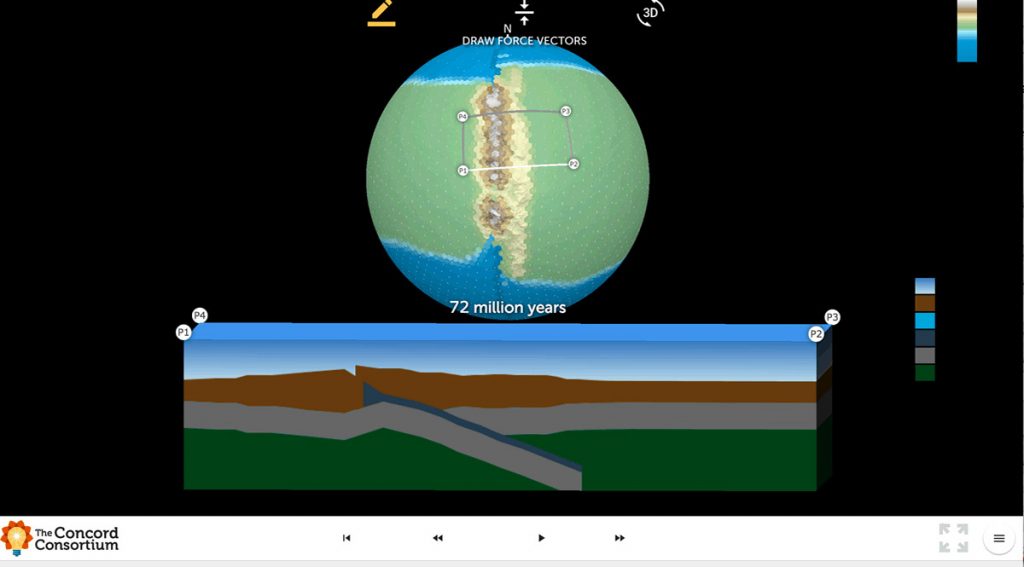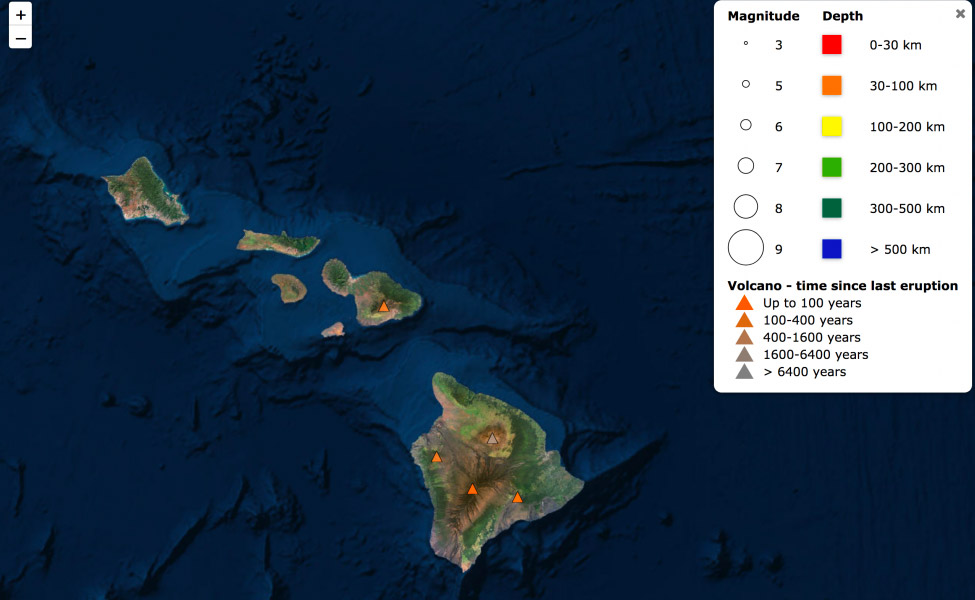Category: Earth Science Education
We are excited to introduce the *beta version* of Tectonic Explorer, our newest Earth system model, developed by our GEODE project. Tectonic Explorer features a complex system of interacting tectonic plates around an entire planet — in this case a simplified, Earth-like planet. For the first time in K-12 education, students will be able to […]
Kilauea, Hawai’i’s youngest and most active volcano, has been continuously erupting since 1983. But it made news again recently with large earthquakes and lava fountains erupting in residential areas. Have you ever wondered what’s going on with Kilauea? Can scientists predict when and where a volcano will next erupt? You can use Seismic Explorer to […]
We’re thrilled to announce that the popular High-Adventure Science (HAS) climate module is now available in Spanish. Many thanks (muchas gracias) to Penny Rowe (University of Santiago of Chile) and Cristián Rizzi (Universidad de San Andrés, Argentina) for taking this on! The Spanish-language version directly parallels the existing English-language version. The HAS climate module poses […]
When you live in New England in the winter, you pay attention to the forecast. Large snowstorms can make travel near impossible. Heavy snow and blowing winds can cause coastal flooding, power outages, and roof collapses. The National Weather Service (NWS) exists to “provide weather, water, and climate data, forecasts and warnings for the protection […]
Following the recommendation to incorporate the Next Generation Science Standards (NGSS) science and engineering practices in their classrooms, schools across the country are looking for ways to integrate scientific argumentation into their curriculum. Since 2012 the High-Adventure Science project in collaboration with National Geographic Education has offered free online modules for Earth and space science […]
Earth’s landforms have been shaped over hundreds of millions of years by the movement and interaction of Earth’s tectonic plates. While geoscientists can correlate the wide variety of landforms to this movement, teaching about it poses significant challenges. It’s hard for students to reason spatially and temporally about such processes. One of the goals of […]
In his spare time, Saul Amster likes to program. He’s currently working on a project to turn a tablet into a magic mirror. Yes, like Snow White’s evil stepmother (“Mirror, mirror on the wall…”), except imagine asking the mirror for the day’s forecast or the score of last night’s game. “Programming is an interesting hobby,” […]
A new resolution may overturn the Interior Department’s “Stream Protection Rule,” which required coal mining companies to monitor and test the quality of local streams and rivers before, during, or after mining operations. There is no better time than the present to learn about the importance of water issues in our communities and environment. Three […]
Geoscience poses many questions. Why are there continents and oceans? How do mountains form? Why do volcanoes form in some areas and not others? What causes earthquakes to be more frequent in some areas than others? Why are oil, diamond, gold, and other deposits clustered in particular areas rather than being spread evenly across the […]
We are excited to announce that the Concord Consortium’s High-Adventure Science modules are now available on the National Geographic Education website, thanks to a National Science Foundation-funded partnership with National Geographic Education. High-Adventure Science modules have been used by thousands of students so far, and we welcome the opportunity to share our modules with a wider audience of middle and high school teachers.

